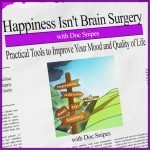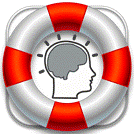
Living with Pain and Chronic Illness
Dr. Dawn-Elise Snipes PhD, LPC-MHSP, LMHC
Executive Director, AllCEUs
Host, Counselor Toolbox
Objectives
~ Prevalence and characteristics of chronic illness
~ Characteristics of pain
~ Effects of pain and chronic illness and possible interventions
~ Depression
~ Anxiety
~ Guilt
Chronic Illness: The New Normal
~ About half of all American adults have a chronic illness according to the National Health Council http://www.nationalhealthcouncil.org/sites/default/files/NHC_Files/Pdf_Files/AboutChronicDisease.pdf
~ Chronic Illnesses include (but are not limited to)
~ Asthma
~ Cancer
~ Chronic pain
~ Diabetes
~ Fibromyalgia
~ Heart disease or high blood pressure
~ Lupus
~ Lyme Disease
~ Mental Illness (Anxiety, depression, PTSD)
Characteristics of Pain
~ Everyone has pain sometimes
~ Our bodies are incredibly resilient
~ Knowing your pain can help your care team.
~ Acute or Chronic
~ Stabbing, aching, throbbing, burning…
~ Constant or intermittent
~ Stationary or radiating
~ Any numbness
Effects of Pain and Chronic Illness
~ Depression
~ Fatigue
~ Sleep Disturbances
~ Hopelessness/Helplessness
~ Negative thoughts -> Stress -> Serotonin -> Pain
~ Interventions
~ Mindfulness
~ Good sleep habits
~ Circadian rhythm maintenance
~ Identify the things you CAN control and that are GOOD
~ Eat healthfully to support Serotonin functioning
Effects of Pain and Chronic Illness
~ Anxiety
~ Things wont get better
~ It is getting worse
~ Consequences of pain (lost job, relationships, fitness…)
~ Interventions
~ Avoid caffeine and nicotine
~ Educate yourself about the disorder and the PROBABILITY things will get worse
~ Keep a log of the good and bad days
~ Practice distress tolerance skills
~ Use the Challenging Questions Worksheet to address anxiety provoking thoughts
Effects of Pain and Chronic Illness
~ Guilt
~ Self anger for not being able to…
~ Can cause you to lash out at others—push them away so you don’t disappoint them like you disappointed yourself
~ Interventions
~ Think about how you would want your child or best friend to feel if they were in your position
~ Get rid of the shoulds
~ Focus on the things that you CAN do
~ Decide whether it is worth using your energy to be mad at yourself (and the world)
Summary
~ Everyone experiences pain sometimes
~ Pain indicates that something may be wrong
~ People who experience chronic pain/illness, or an extended bout of pain (such as after shoulder surgery) may experience feelings of depression, anxiety and guilt.
~ There are many different ways to address these feelings
~ Anxiety/fear and anger are your body’s response to some sort of physical, social or self-concept threat.
~ Guilt is anger directed toward yourself
~ Depression is a sense of hopelessness and helplessness that arises when the pain doesn’t seem to remit.
Happiness Isn’t Brain Surgery is an educational podcast and not a replacement for medical advice. All health decisions should be made in conjunction with your healthcare provider.
Connect With Us
Living with Pain and Chronic Illness
Dr. Dawn-Elise Snipes PhD, LPC-MHSP, LMHC
Executive Director, AllCEUs
Host, Counselor Toolbox
President, Recovery and Resilience International
Objectives
~ Review the following effects of pain
~ Grief
~ Self Esteem problems
~ Circacdian Rhythm Disruption
~ Explore mitigating and exacerbating factors
Effects of Pain and Chronic Illness
~ Grief
~ Stages: Denial, Anger, Bargaining, Depression, Acceptance
~ Interventions
~ Work through the stages of grief for each of the losses because of the pain (Physical, self-concept, job, freedom (driving/mobility), dreams…)
Effects of Pain and Chronic Illness
~ Self-Esteem
~ How you feel about the difference between who you want to be and who you are
~ Interventions
~ Make a list of the positive things about you
~ Identify 1 or 2 goals you can work toward
~ Celebrate small things
~ Silence the inner critic
Effects of Pain and Chronic Illness
~ Circadian Rhythm Disruption
~ Not getting out of bed
~ Staying inside in the dark
~ Sleeping too much
~ Interventions
~ Get out of bed at roughly the same time each morning
~ Get dressed in “day-clothes”
~ Turn on lights and sit in front of a window or get outside to get your “day-clock” started
~ If you must take a nap, keep it under 45 minutes to avoid messing up your sleep schedule
Understanding Your Pain or Chronic Illness
~ Exacerbating factors
~ Emotional
~ Mental
~ Physical
~ Environmental
~ Social
~ Mitigating factors – Do these
~ Emotional
~ Mental
~ Physical
~ Environmental
~ Social
Summary
~ Grief
~ is a complex emotion that accompanies any type of loss
~ Not everyone goes through all the phases
~ Many people between anger and depression
~ Acceptance does not mean liking it, it means incorporating it into your life narrative
~ Self-esteem can fall when a chronic illness or pain keeps you from doing things that are important to you
~ Circadian Rhythm Disruption can happen whenever
~ You are sleeping too much or too little
~ Your body isn’t getting the wake up signals
Summary
~ Exacerbating factors make your problem worse and can include
~ Poor ergonomics
~ Poor sleep
~ Reducing opiates (Temporary)
~ Stress
~ Mitigating Factors
~ Yoga/Stretching
~ Frequent movement
~ Massage
~ Heat/Ice
Happiness Isn’t Brain Surgery is an educational podcast and not a replacement for medical advice. All health decisions should be made in conjunction with your healthcare provider.
Connect With Us
Living with Pain and Chronic Illness
Dr. Dawn-Elise Snipes PhD, LPC-MHSP, LMHC
Executive Director, AllCEUs
Host, Counselor Toolbox
President, Recovery and Resilience International
Objectives
~ Review medical and nonmedical interventions for pain
Note: Any pain intervention should be cleared by your doctor or care team.
Medical Interventions for Pain
~ Tylenol and NSAIDS (Over the counter)
~ Opiates
~ Provide relief by attaching to opioid receptors
~ Body stops making natural (endogenous) opioids when flooded with prescription opiates
~ Over time body reduces amount of opiate being let through (tolerance) (after only several days)
~ When you stop taking prescription opioids the body takes a few days to start making natural opioids again so pain threshold is markedly decreased
Medical Interventions for Pain
~ Muscle Relaxants (Flexeril, Soma)
~ Gabapentin (Neurontin)
~ SSRIs (Cymbalta)
~ Nerve Blocks
~ Accupuncture/Accupressure
http://www.webmd.com/pain-management/features/acupuncture-pain-killer#1
Arch Intern Med. 2012;172(19):1444-1453. Acupuncture for Chronic PainIndividual Patient Data Meta-analysis http://jamanetwork.com/journals/jamainternalmedicine/fullarticle/1357513
Nonmedical Interventions for Pain and Chronic Illness
~ Guided Imagery
~ Color Imagery: Think of a color that you associate with pain, such as red, and picture the painful area of your body as red. Imagine shrinking, fading or dispersing the red.
~ Symbol Imagery: Think about how the pain feels. Does it feel like a knife sticking in your joint? If so, imagine you are pulling the knife out of your joint and throwing it away
~ Scenic Imagery: Imagine a place that is calming to you using all of your senses
Nonmedical Interventions for Pain and Chronic Illness
~ Mindfulness
~ Alternate focus: Stop thinking about the pain and how to relieve it
~ Deep relaxation breathing through the pain
~ Distractions
~ One moment at a time
Nonmedical Interventions for Pain and Chronic Illness
~ Radical Acceptance
~ Life can be worth living even with painful events
~ Rejecting reality does not change reality.
~ Changing reality requires first accepting reality.
~ Pain can’t be avoided; it is nature’s way of signaling that something is wrong.
~ Rejecting reality turns pain into suffering.
~ Refusing to accept reality can keep you stuck in unhappiness, bitterness, anger, sadness, shame, or other painful emotions.
Nonmedical Interventions cont…
~ Stretching/Balancing Exercises
~ Chest/Upper Back
~ Right/Left Back/Chest
~ Abs/Lower Back
~ Ice or Heat Packs
~ Massage
~ TENS units
~ Improve sleep
~ Do more things you enjoy
Nonmedical Interventions cont…
~ Stress Management
~ Stress causes
~ Digestive upset/pain
~ Back pain
~ Migraines/headaches
~ Jaw pain
~ Interventions
~ Meditation
~ Distract Don’t React
~ Identify your most important values, decide whether stressing over [this] gets you closer to or further away from your goals/values
Summary
~ Pain is inevitable
~ Many people struggle with chronic conditions including TMJ, migraines, depression, fibromyalgia and pain.
~ It impacts your
~ Mood
~ Thoughts
~ Behaviors
~ Relationships
~ Addressing pain will help reduce related
~ Anxiety
~ Depression
~ Anger
Summary
~ Pain Management
~ Medical
~ Nonmedical
~ Pain management requires a comprehensive approach addressing
~ Physical causes of pain
~ Mood
~ Social supports
~ Sleep
Happiness Isn’t Brain Surgery is an educational podcast and not a replacement for medical advice. All health decisions should be made in conjunction with your healthcare provider.
Connect With Us
